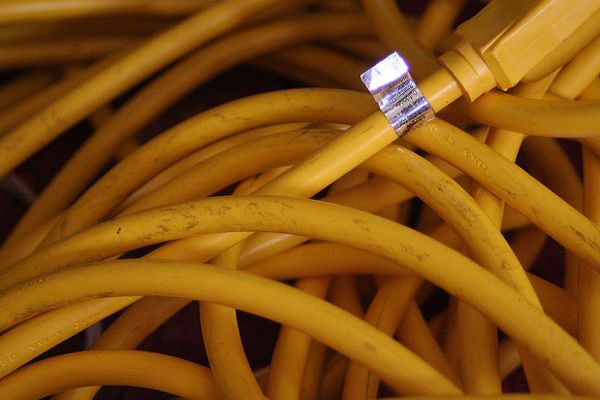Extension Cord Safety

The U.S. Consumer Product Safety Commission (CPSC) estimates that each year, about 4,000 injuries associated with electric extension cords are treated in hospital emergency rooms. About half of the injuries involve fractures, lacerations, contusions or sprains from people tripping over extension cords. CPSC also estimates that about 3,300 residential fires originate in extension cords each year, killing 50 people and injuring about 270 others. The most frequent causes of such fires are short circuits, overloading, damage and/or misuse of extension cords.
Today we'll look at some tips for use of extension cords
- Use extension cords only when necessary and only on a temporary basis. Do not use extension cords in place of permanent wiring.
- Do not remove the prongs of an electrical plug. If plug prongs are missing, loose, or bent, replace the entire plug.
- Do not use an adapter or extension cord to defeat a standard grounding device. (e.g., Only place three-prong plugs in three-prong outlets; do not alter them to fit in a two-prong outlet.)
- Use extension cords that are the correct size or rating for the equipment in use. The diameter of the extension cord should be the same or greater than the cord of the equipment in use.
- Only use cords rated for outdoor use when using a cord outside.
- Do not run cords above ceiling tiles or through walls.
- Keep electrical cords away from areas where they may be pinched and areas where they may pose a tripping or fire hazard (e.g., doorways, walkways, under carpet, etc.).
- Always inspect the cord prior to use to ensure the insulation isn't cut or damaged. Discard damaged cords, cords that become hot, or cords with exposed wiring.
- Never unplug an extension cord by pulling on the cord; pull on the plug.
- In locations where equipment be pushed against an extension cord where the cord joins the plug, use a special "angle extension cord" specifically designed for use in these instances.
Lance replied the topic: #344
A common error is to use an extension cord coiled up, or partly coiled, it causes excessive heat buildup in the cord softening the insulating plastics resulting in a short.
The cord should be wound up by rolling in circular fashion or unrolled, not twisted around ones arm, cords last longer like this because the wires inside the cable are twisted together and tighten or loosen. Then the cord becomes kinked.
The cord should be wound up by rolling in circular fashion or unrolled, not twisted around ones arm, cords last longer like this because the wires inside the cable are twisted together and tighten or loosen. Then the cord becomes kinked.
